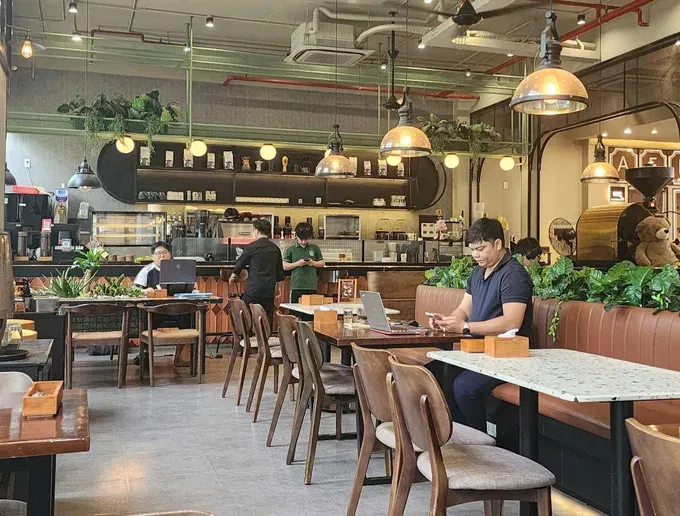
In the first half of 2025, more than 50,000 food and beverage (F&B) outlets across Vietnam closed, marking a significant shakeout in the industry.
According to a new report from iPOS.vn, a company providing specialized hardware and software for Vietnam’s F&B sector, the country’s total F&B revenue during this period reached an estimated VND406,100 billion (US$15.42 billion). This figure represents 58.9 percent of 2024’s full-year revenue, falling short of expectations.
Vietnam now has about 299,900 F&B establishments, down 7.1 percent (or roughly 50,000 locations) compared with the previous year. Both Hanoi and Ho Chi Minh City saw declines exceeding 11 percent.
During the first half of 2024, around 30,000 F&B outlets had closed, a 3.9 percent drop, but the market later rebounded, reaching 323,010 stores by year-end.
The latest data also shows inflationary pressures mounting. The average Consumer Price Index (CPI) for the first six months of 2025 rose by 3.27 percent year-on-year. The food and catering category climbed 3.69 percent, while housing, utilities, fuel, and construction materials surged 5.73 percent.
Rising input costs have forced many F&B businesses to raise prices. About 35.4 percent of operators cited higher raw material prices as the main factor. Meanwhile, 21 percent reported pressure from changes in macro policies such as electronic invoicing and household business taxes and 20 percent pointed to increased personnel expenses.
Premises rental prices are another notable reason, with 13.7 percent of businesses choosing it. The survey also showed that 3.6 percent of businesses increased prices according to a predetermined schedule, showing that most of the price increase decisions were passive in the face of cost fluctuations. In addition, there is fierce competition and the "open fast - close fast" model. Many small stores experiment with business models for a few months but do not have enough capital or strategy to survive long-term.
Major chains are actively restructuring their operations to enhance profitability and reduce exposure to high-cost and high-competition urban environments.
Of these, Dodo Pizza announced the closure of all its HCMC locations effective May 26, 2025. This move reflects a strategic geographic pivot toward small and medium-sized cities, where lower operating costs and reduced competitive intensity are anticipated to yield better returns.
Starbucks is also implementing a premiumisation strategy. Following the closure of select older branches, the company has focused on reopening in high-value locations with an elevated service model, such as Starbucks Reserve. This approach prioritizes strengthening brand perception and maximizing profit margins over simply maintaining mass market coverage.
F&B expert Do Duy Thanh has proposed a crucial strategic breakthrough for the transition from a pure F&B operator to a food manufacturer. He notes that the culinary industry is increasingly converging with the broader food industry post-pandemic. Restaurants, by leveraging their existing kitchen capacity and proprietary recipes, are uniquely positioned to produce and widely distribute semi-processed or packaged products. This model provides a significant avenue for revenue diversification and scaling.
Under increasing market pressure, a shift in mindset from passive defense to proactive adaptation has become essential for business survival and growth. Rather than focusing solely on cost-cutting measures that risk alienating customers, investors and operators are encouraged to adopt a holistic perspective on revenue generation and sustainable development.

)






















